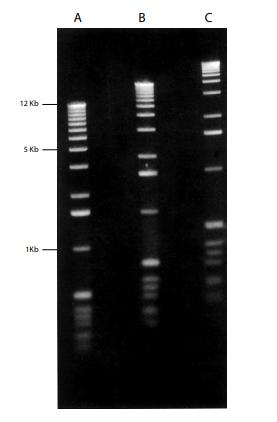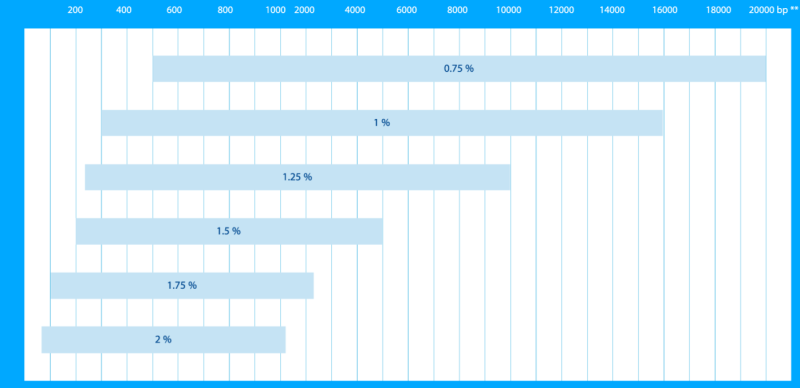Knowde Enhanced TDS
Identification & Functionality
- Chemical Name
- Pharma & Nutraceuticals Functions
- CAS No.
- 9012-36-6
- EC No.
- 232-731-8
- Technologies
Applications & Uses
- Markets
- Applications
- Electrophoresis of DNA fragments ≥1000 bp.
- In-Gel enzymatic processing (digestion, ligation, PCR).
- Preparative electrophoresis.
- Analysis and recovery of large DNA fragments for further applications.
Properties
- Typical Properties
| Value | Units | Test Method / Conditions | |
| Ash Content | max. 0.4 | % | — |
| End-Expiratory Occlusion | max. 0.12 | — | — |
| Gel Strength (at 1%) | min. 250 | g/cm2 | — |
| Gelling Temperature (at 1.5%) | 24-28 | °C | — |
| Melting Temperature (at 1.5%) | max. 65.5 | °C | — |
| Moisture Content | max. 10 | % | — |
| Sulfate Content | max. 0.1 | % | — |
Technical Details & Test Data
- Functional Tests
- DNA resolution: bands appear sharp and finely resolved.
- DNAse/RNAse activity: none detected.
- DNA binding: none detected.
- In-Gel enzymatic processing: passes test.
- Enzymatic degradation by agarase: passes test.
- Gel background: very low after EtBr staining.
- Test Data

LM GQT Agarose at different concentrations. A-0.75%, B-1% and C-1.25%.
Marker: 1Kb ladder, 0.5 μg/lane.
Running conditions: 1X TAE buffer, 4,5V/cm, 2 hours 30 min.- Ranges Of Separation For LM AND LM GQT AGAROSE

Range of separation depends upon the choice of buffer. The ranges were determined in presence of TAE buffer. Migration in the TBE buffer is slower; therefore lower concentrations can be used to obtain similar separation ranges.

